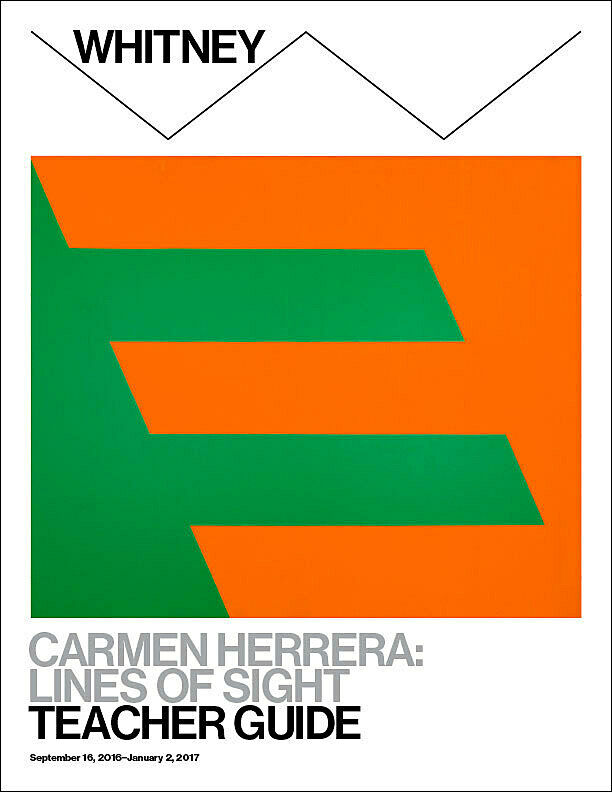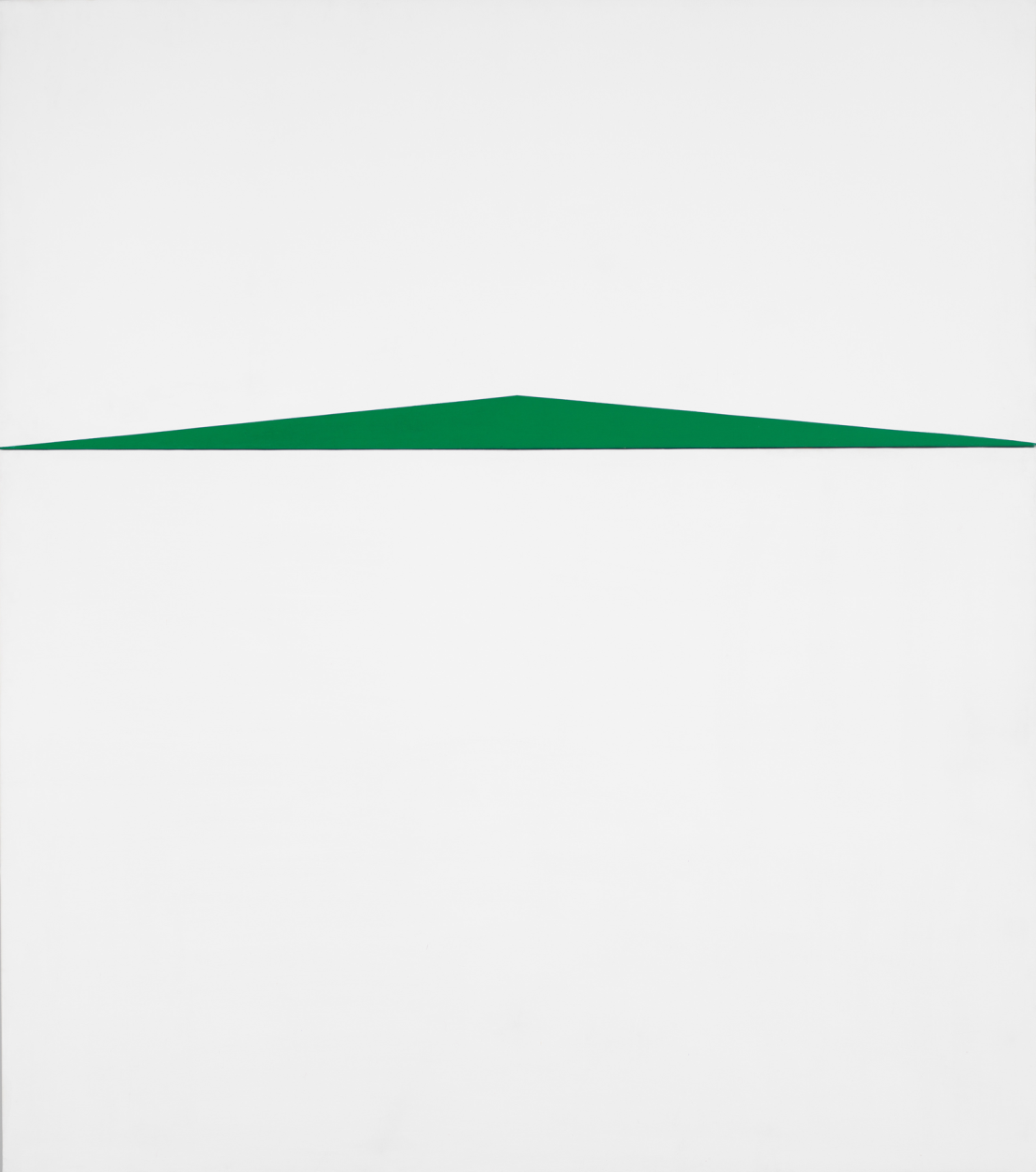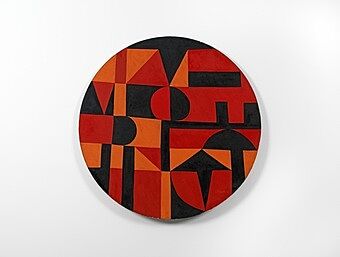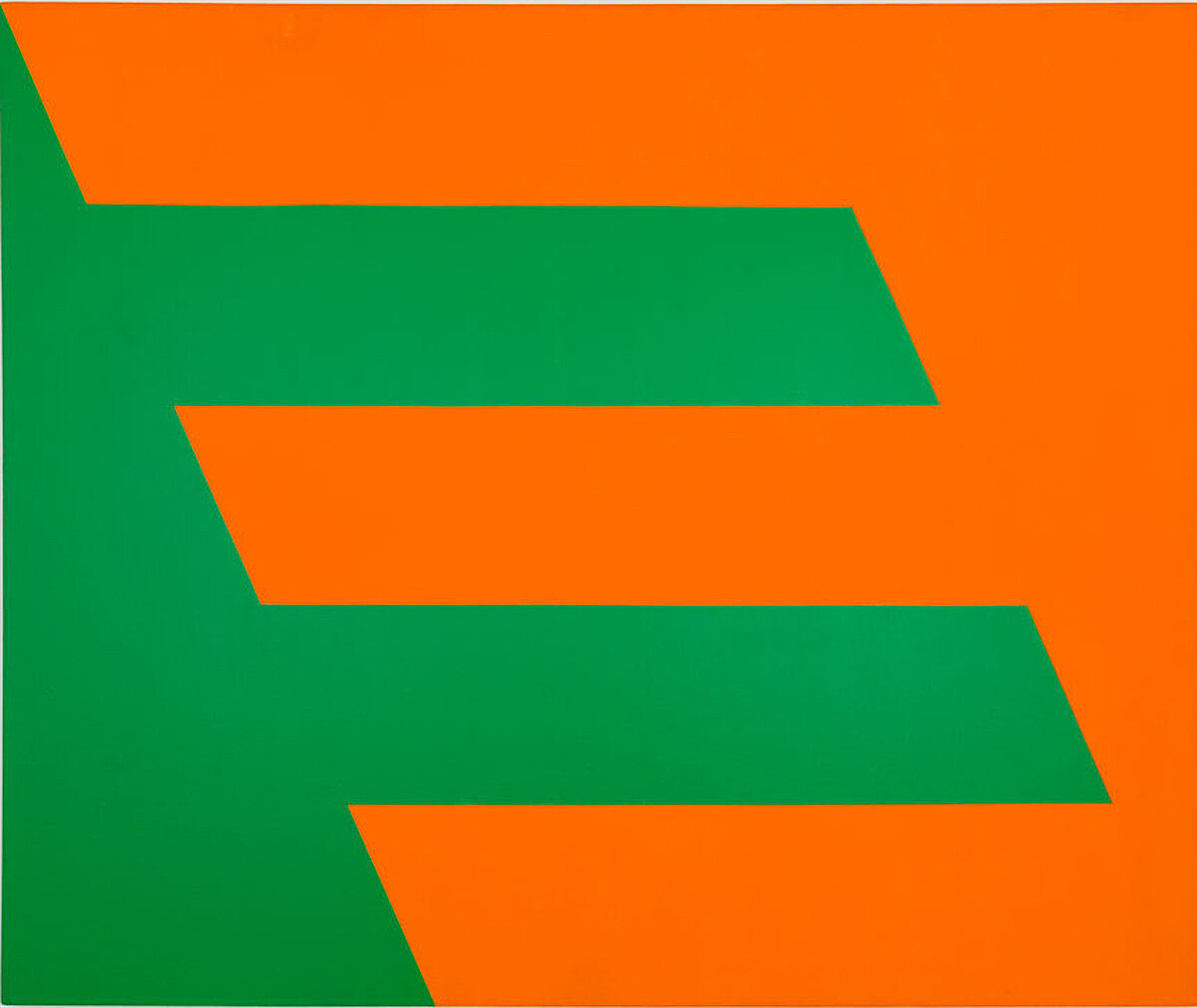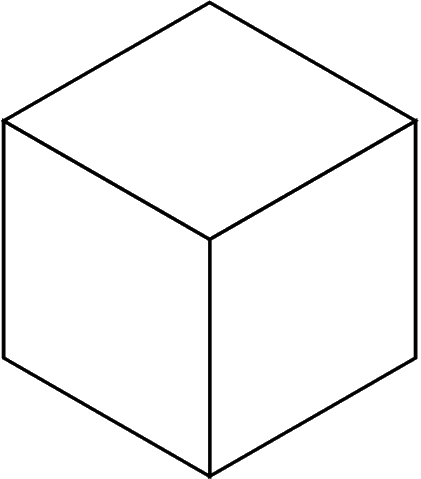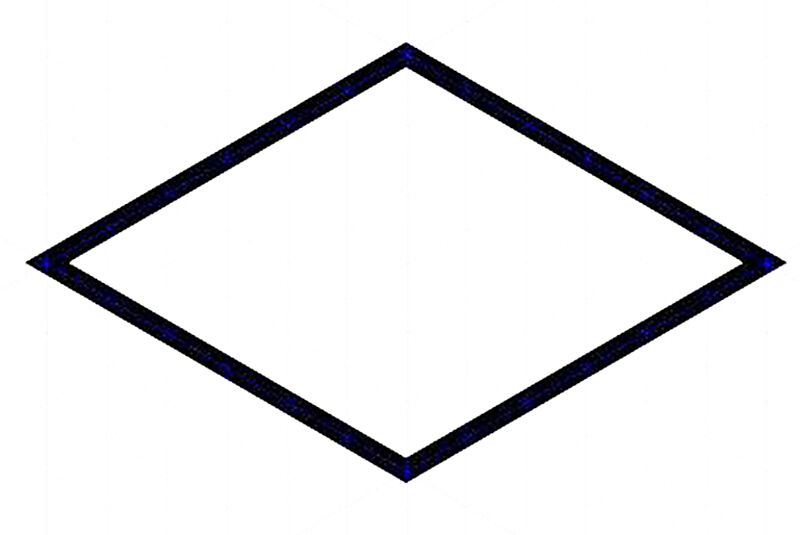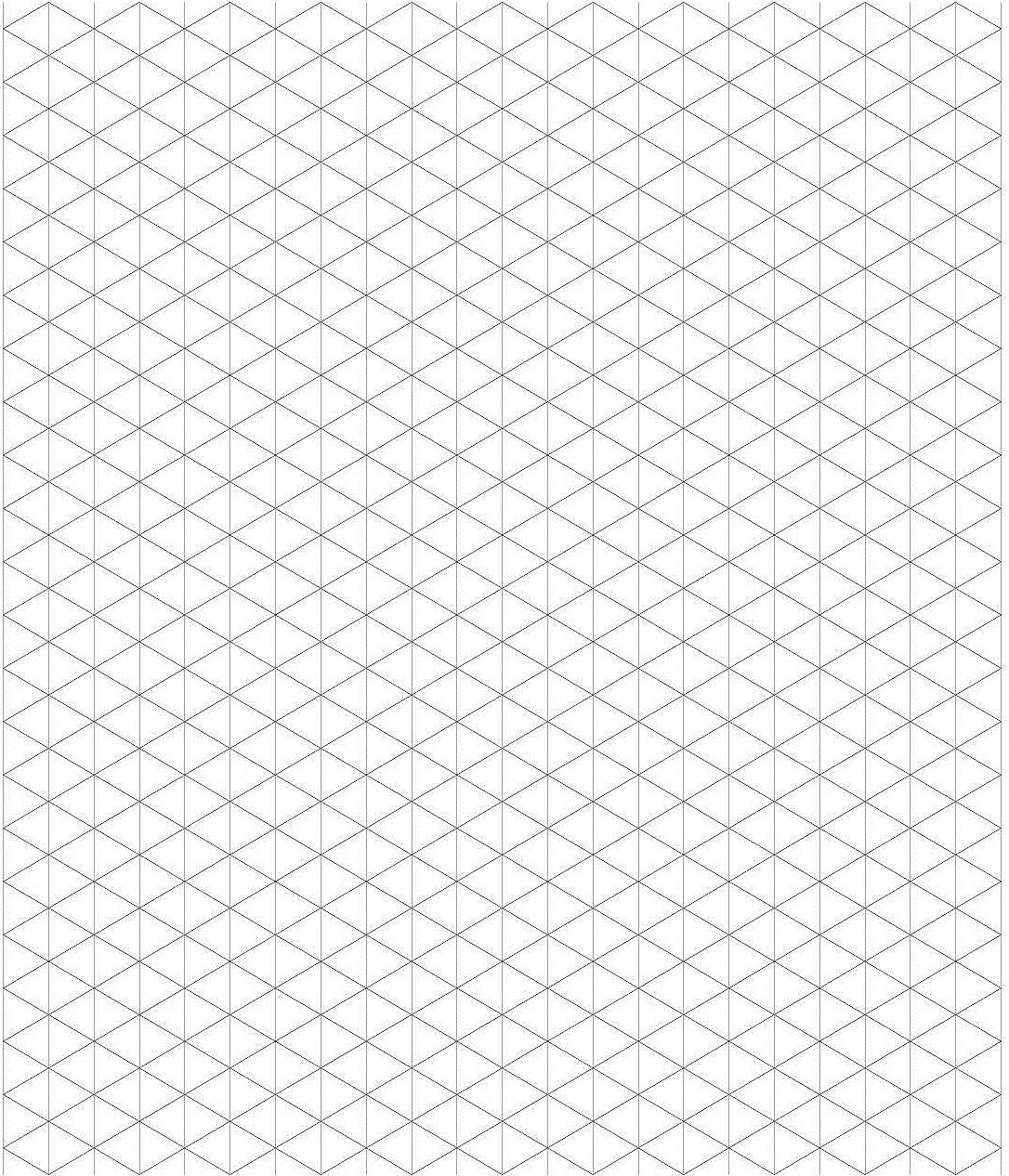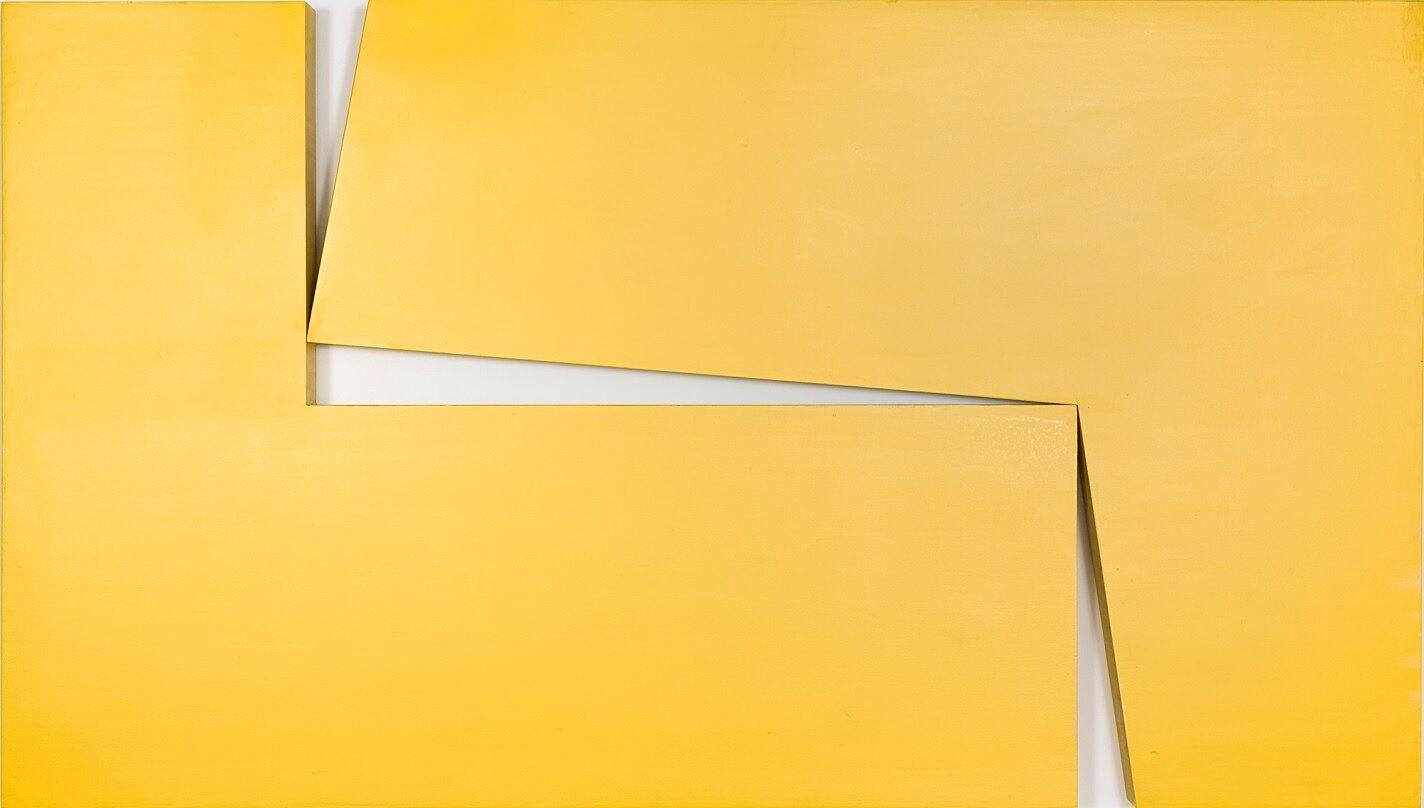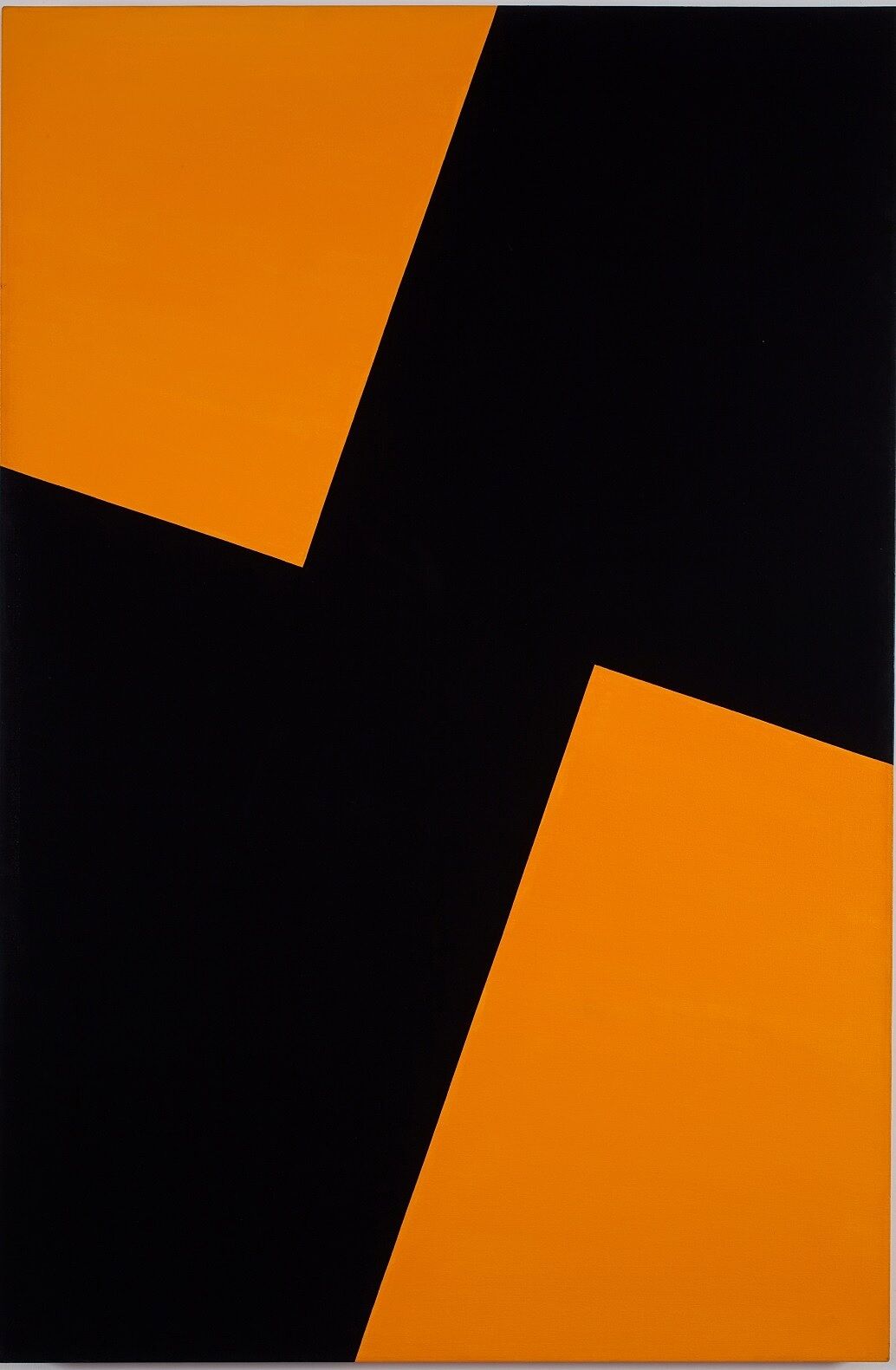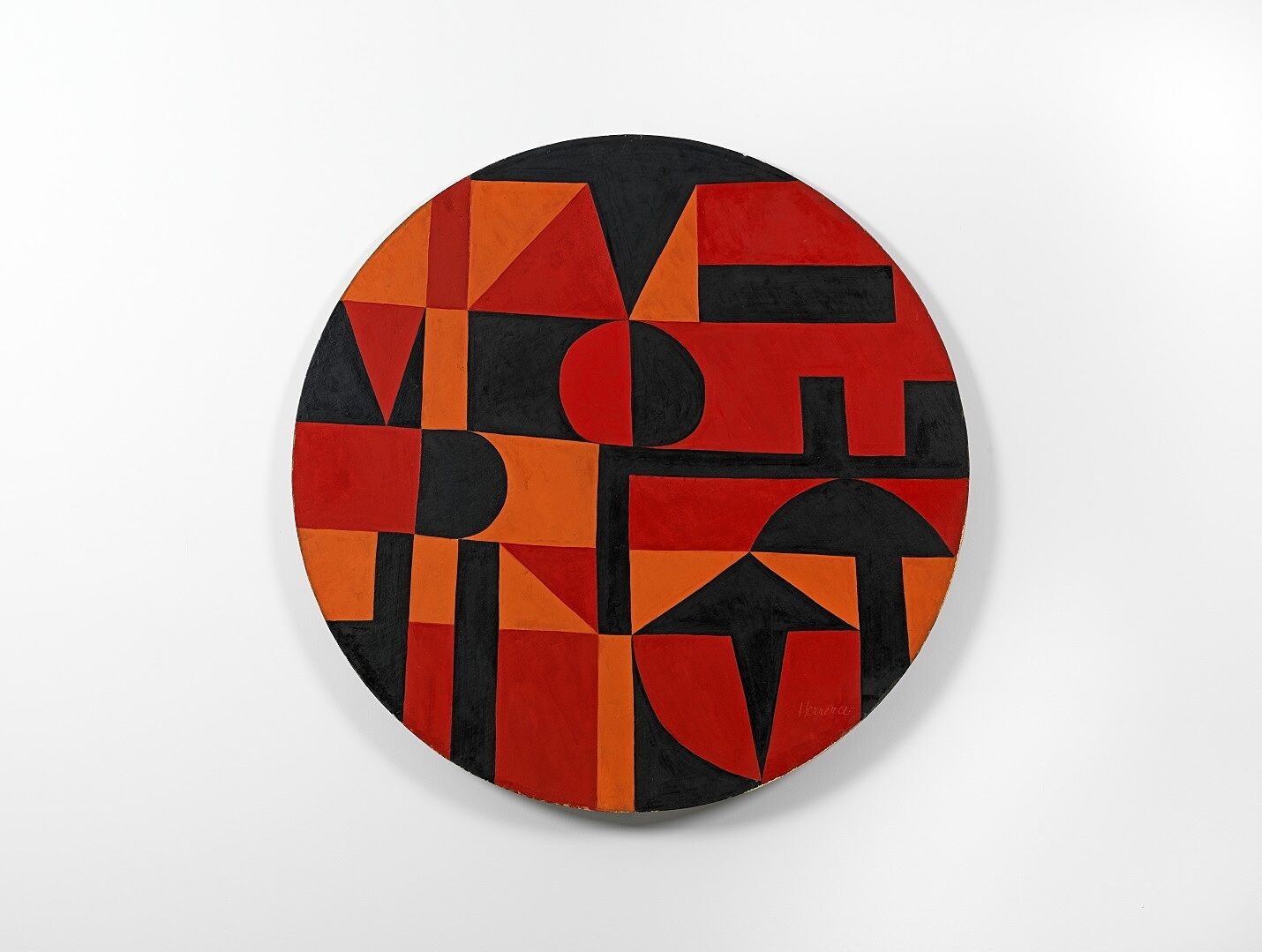Teacher Guide:
Carmen Herrera: Lines of Sight
Sep 16, 2016
Dear Teachers,
We are delighted to welcome you to the exhibition, Carmen Herrera: Lines of Sight, featuring fifty works by Carmen Herrera from 1948–1978. During this period, Herrera developed her distinctive style of geometric abstraction, employing a distilled palette of just two or three colors for each composition.
Herrera is a 101-year-old, Cuban-born artist with a nearly seven-decade-long career, most of it in the United States. This exhibition situates Herrera’s groundbreaking abstract work in its proper place in the trajectory of art history. The show includes a selection of abstractions from Paris, a rare gathering of Herrera’s important Blanco y Verde series, as well as paintings from the 1960s and 1970s and several of her three-dimensional works.
This teacher guide provides a framework for preparing you and your students for a visit to the exhibition and offers suggestions for follow up classroom reflection and lessons. The discussions and activities introduce some of the exhibition’s key themes and concepts.
Our Guided Visits of this exhibition are free for New York City public schools. Please visit /education/schools-educators/k-12 to sign up.
Guided Visits are now offered in Spanish! Sign up now!
¡Ahora se ofrecen visitas guiadas en español! ¡Inscríbete ahora!
We look forward to welcoming you and your students at the Museum.
Enjoy your visit!
The School and Educator Programs team at the Whitney
Carmen Herrera: Lines of Sight
“I believe that I will always be in awe of the straight line, its beauty is what keeps me painting.”
—Carmen Herrera
Carmen Herrera: Lines of Sight presents the first in-depth examination of Carmen Herrera’s early career, which spanned the art worlds of Havana, Paris, and New York from 1948 to 1978. During this time Herrera established a highly distilled, geometric style of painting that places her alongside the great abstract artists of the twentieth century. She eliminated all but what she considered to be the most essential in her works, collapsing figure and ground, color and form. As she has explained: “I had to forget about trimmings and go to the core of things.”
Born May 30, 1915, in Havana, Cuba, Herrera studied art, art history, and architecture in Havana and Paris. In 1939 she married an American, Jesse Loewenthal, a teacher at Stuyvesant High School, and moved to New York City. From 1948 to 1953, Herrera and Loewenthal lived in Paris, and it was during her Paris years that Herrera developed her signature approach to abstraction. In these early works, Herrera straightened her contours and reduced her palette for each composition to three colors, then refined it further to just two colors. An important breakthrough came when she began treating the edges of the canvas and frame as compositional elements, thus positioning her paintings as objects hanging on a wall rather than illusionistic representations of something observed in the world.
Herrera’s spare, unembellished paintings did not find a warm reception when she returned to New York in 1954, a time when the gestural works of the Abstract Expressionists still reigned. As both a woman and an immigrant, Herrera also faced significant discrimination in the art world. Nonetheless, she continued to paint, exploring the permutations within her self-prescribed limits of two-color compositions and clean lines.
The first section of the exhibition features works from 1948–1958, when Herrera experimented with different modes of abstraction before establishing the visual language that she would explore with great nuance for the succeeding five decades. An unprecedented gathering of works from what Herrera considers her most important series, Blanco y Verde, comprise the second section of the exhibition. The nine paintings from the series, spanning the years 1959–1971, highlight the groundbreaking ways in which Herrera conceptualized her paintings as objects, using the physical structure of the canvas as a compositional tool and integrating the surrounding environment. The final section features work dating from approximately 1962–1978, illuminating Herrera’s continued experimentation with figure/ground relationships. Also included in this section are four sculptural works, which Herrera refers to as “estructuras” (structures). These wooden works, alongside several drawings from the 1960s, illustrate the architectural aspect of her vision and the way in which many of Herrera’s paintings begin with a three-dimensional concept. The latest works in this section are seven paintings that comprise her Days of the Week series from 1975–78.
Since the late 1990s, Herrera has received increasing attention for her work. Today, at the age of 101, Herrera continues to work almost every day in her studio, focusing on a disciplined but highly sophisticated exploration of color and form.
Carmen Herrera: Lines of Sight is organized by Dana Miller, former Richard DeMartini Family Curator and Director of the Collection at the Whitney Museum of American Art.
Sources
Dana Miller, Carmen Herrera: Lines of Sight. Exhibition Catalogue. New York: Whitney Museum of American Art, 2016.
Exhibition wall text, Whitney Museum of American Art, 2016.
Exhibition press release, 2016.
Pre-visit Activities
Before visiting the Whitney, we recommend that you and your students explore and discuss some of the ideas and themes in the exhibition. We have included selected images from the exhibition, along with relevant information that you may want to use before or after your Museum visit. You can print out the images or project them in your classroom.
Pre-visit Objectives:
- Introduce students to abstract art and the work of Carmen Herrera.
- Introduce a selection of themes that students may discuss on their museum visit.
- Explore how Herrera developed her signature approach to abstraction.
Artist as Experimenter
Abstraction
a. An abstract work of art is not recognizable as a picture of a person, place, or object. Abstract art is sometimes described as non-objective, but it may be based on an emotion, a sensation, or an aspect of the real world that has been simplified, generalized, distorted, or rearranged. Ask your students what the words abstract art mean to them. After discussing their ideas, look at Carmen Herrera’s painting Blanco y Verde, 1959. Ask students to describe and discuss this work. What lines and shapes do they see? How are the lines and shapes arranged? What colors does the artist use? How does color affect the lines and shapes in the composition? What type of space does the triangle shape occupy—is it flat or illusionistic? Do students think that the composition is entirely abstract? Why or why not?
b. Ask your students to view and discuss a small selection of abstract works by artists in the Whitney’s collection. For example, Ellsworth Kelly, Agnes Martin, Barnett Newman, Georgia O’Keeffe, and Frank Stella. Use the links below to find images of works by these artists. Ask students to describe and discuss each work and compare them to Herrera’s Blanco y Verde, 1959. What similarities can they find? How are the works different?
Ellsworth Kelly /collection/works/2423
Agnes Martin /exhibitions/america-is-hard-to-see?&artwork_id=13475&filter_id=26
Barnett Newman /collection/works/12937
Georgia O’Keeffe /collection/works/1386
Frank Stella /collection/works/2965
Artist as Observer
Positive and Negative Space
Positive space refers to the subject or areas of interest in an artwork, such as a person’s face or figure in a portrait, the objects in a still life painting, or the trees in a landscape painting. Negative space is the background or the area that surrounds the subject of the work.
a. Explore and discuss positive and negative space with your students. Talk about where students might have noticed positive and negative space in their own lives. For example, objects in their classroom, on company logos, Tshirts, and other clothing, in advertising, food labels, and children’s books. Ask them to look at the objects around them in their classroom, such as a desk or chair, and identify the positive and negative spaces.
b. Explore how Carmen Herrera has used shapes and color to create positive and negative space in her paintings. Ask your students to view and discuss Herrera’s painting Iberic, 1949 and Green and Orange, 1958. What shapes do they notice? Which shapes seems to pop out or recede in space? Why?
c. Students can experiment with positive and negative space by making shapes with their hands, shadow silhouettes on a wall, or by sketching the objects in their classroom. If students make sketches, ask them to try drawing only the negative spaces that surround an object such as a desk or chair. Students could fill in the negative space by shading with a pencil or use color (e.g. red/green, blue/orange, yellow/purple, black/white) to define the positive and negative space in their sketch.
Artist as Experimenter
3D Drawing and Geometry
“I wouldn’t paint the way I do if I hadn’t gone to architecture school. That’s where I learned to think abstractly and to draw like an architect.”
—Carmen Herrera
Conversation with Dana Miller, October 10, 2014.
To develop her hard-edged style of abstraction, Carmen Herrera has undertaken a disciplined, but highly sophisticated exploration of color and form. Herrera studied architecture for only one academic year, but this experience had a profound effect on her. The basic tenets of drafting that she learned in her introductory classes at the Universidad de La Habana enabled her to imagine a three-dimensional form and translate it into two dimensions, onto paper or canvas.
Inspired by the advice of her fellow artist and friend Barnett Newman “not to make something, and then think about it, but to think about something, and then make it,” Carmen Herrera often spends weeks on preliminary drawings, trying out different shapes and compositions and making precise mathematical calculations before embarking on a painting. The preparatory drawings that she makes for each painting reveal how Herrera often thinks in three-dimensional terms, and then transforms that image into two-dimensions.
a. Print out the template of a diamond shape in the teacher guide. Give each student three diamond shapes. Ask students to cut out the diamonds and experiment with them to make a three-dimensional cube. Have them choose three different colors for each diamond shape. When students have finished coloring their diamonds, have them tape or glue their cubes together and display them on a wall so that they form one large image. What effect does their large image have on the classroom space?
b. This project is recommended for older students. Isometric shapes visually represent three-dimensional objects in two dimensions in architectural, technical, and engineering drawings. For example, in a cube, the three coordinate axes appear equally foreshortened and the angle between any two of them is 120 degrees. The drawing may look distorted because the scale of features that appear further away is the same as features that appear closer. An isometric grid consists of vertical lines and diagonal lines at 120-degree angles that can be used as a template to draw 3D objects. Print the isometric grid in the teacher guide and ask your students to use it to draw a simple, geometric object such as their mobile phone, other electronic device, or an open book. For more information on isometric drawing, use the links below.
http://www.technologystudent.com/prddes1/drawtec2.html
Cube Template
Isometric Grid Template
Post-visit Activities
Objectives
- Enable students to reflect upon and discuss some of the ideas from the exhibition.
- Have students further explore some of the artist’s work through artmaking.
Museum Visit Reflection
After your museum visit, ask students to take a few minutes to write about their experience. What new ideas did the exhibition give them? What questions do they have? Ask students to share their thoughts with the class.
Artist as Experimenter
Object and Color, Color and Object
a. With your students, view and discuss Amarillo “Dos”, 1971. How is this work different from Herrera’s paintings? In what ways is it similar? For older students: what do they notice about positive and negative space in this work? Why do students think Herrera experimented with three dimensional space?
b. Have students use the initials of their first & last names to make a cardboard wall structure or free-standing sculpture with the two letter shapes. Use single face corrugated cardboard that is smooth on one side. You can score this cardboard with a ballpoint pen and cut it with scissors. Use paper tape or glue to combine the cardboard shapes together.
Source for corrugated cardboard: http://www.uline.com/BL_1902/Corrugated-Wrap
c. For younger students: Draw and cut out two cardboard shapes that are the same size. Glue the cardboard shapes to the rim and the base of a paper cup so that the cup acts as a stabilizing structure. Ask students to use one or two colors to paint their sculptures.
See this video for reference: https://www.youtube.com/watch?v=bgREt8LKU7Y
Artist as Experimenter
Color, Form, Edge
a. Ask your students to view and discuss Carmen Herrera’s painting, Friday, 1978. Have students imagine that they are looking at this painting from above. What do they notice? Discuss the title of this work. Is there anything that makes students think about this particular day of the week? Does this painting reflect any of the ways they think of or feel about Fridays? Other days of the week? What colors do they associate with the days of the week? Why? What do these colors mean to them?
b. Students could work individually or in pairs for this project. Ask your students to choose two different colored sheets of 9” x 12” construction paper. Younger students could choose opposite colors such as light/dark, warm/cool, or ”yes” and “no” colors as Herrera described the color pairing of green and white in her Blanco y Verde series (Conversation with Dana Miller, February 18, 2014). Have students use one sheet as the background and cut out a large, simple, geometric shape of their choice from the other sheet. First have students place their geometric shape in the center of the sheet of construction paper. Is it interesting to look at? Why or why not? Next, have them experiment with placing the shape somewhere else in the composition. For example, along the edge of the other piece of construction paper. What do they notice? Is one composition more interesting or dynamic than the other? Why? When students are happy with their composition, have them glue it down.
c. Ask students to display their work together on a classroom wall. Have them determine where their work will be displayed and how it will be arranged. When the display is complete, view and discuss students’ collages. Did the choice of where the collages will be displayed affect the way students see them? In what ways? How do the students’ collages interact with the classroom space?
Images and Related Information
Carmen Herrera
Blanco y Verde, 1959
In 1959 Herrera made the first of her Blanco y Verde paintings. The extended series spans twelve years, and the artist regards it as among her most important bodies of work. Each of the fifteen known extant paintings in the series is a stunning iteration of a set of basic principles: rectangular compositions in green and white with triangular wedge forms. It is as if Herrera were turning over a block in her mind and excising slivers, like a jeweler cutting facets in a stone. Herrera described the color pairing as “like saying yes and no.”* She made this painting from two canvas panels that meet at the bottom of the green triangle. In the top panel, the triangular wedge seems to cut into the canvas; the lower panel is a monochromatic white rectangle.
*Conversation with Dana Miller, February 18, 2014.
Iberic, 1949
Carmen Herrera explored various styles of abstraction while she was living in Paris from 1948 to 1953. Her first use of preparatory drawings and tape as a masking tool, as well as the arrival of acrylic paint in Paris, enabled her to create geometric compositions and hone the precision of her lines. The dynamic shapes and colors of this tondo* painting and other paintings of Herrera’s Paris period were inspired by the work of Latin American and European artists with whom she exhibited at the Salon des Réalitiés Nouvelles, an annual exhibition devoted exclusively to abstract art.
*Tondo is a Renaissance term for a circular work of art.
Amarillo “Dos”, 1971
In the late 1960s, Herrera began a small series of three-dimensional works she named the Estructuras (Structures). She hired a carpenter to create the structures—first in Styrofoam and then in wood. According to Herrera, these Estructuras were based on previous paintings that were “really crying out to become sculpture.”* To make the Estructuras, Herrera sliced into single-colored solids, leaving wedges of negative space. She envisioned these works in an environmental sense, using the surrounding walls as part of the composition. She explained, “The hard edges of these ‘wall structures’ are formed by space.”**
*Carmen Herrera, in “Carmen Herrera: Artist in exile, Part 3,” YouTube video, 9:22, episode three of four from Ray Blanco, Artist in Exile: Carmen Herrera, broadcast by PBS, 1994, posted by Frederico Sève Gallery, December 10, 2009, https://www.youtube.com/watch?v=yzQvAAPrsxw
**Carmen Herrera, application for Guggenheim fellowship, 1970.
Friday, 1978
In 1975 Carmen Herrera began a series of seven paintings titled Days of the Week. Each painting evokes a sense of the distinctive character of the specific day. The seven works possess a sculptural presence, with black juxtaposed against vivid color, and the shapes and mechanics of balance vary from composition to composition. For Friday, Herrera added a spacer to the painting’s stretcher to increase depth. The orange shapes in this painting might be seen as the corners of two rectangular forms that have shifted apart and slipped off the edges of the canvas.
Bibliography and links
Dana Miller, Carmen Herrera: Lines of Sight. Exhibition Catalogue. New York: Whitney Museum of American Art, 2016.
Exhibition information and press clips.
99 Objects: Dana Miller on Blanco y Verde, 1959 by Carmen Herrera.
https://www.youtube.com/watch?v=7InocPdGzHA
https://www.youtube.com/watch?v=iQNWpKS9xM0
https://www.youtube.com/watch?v=yzQvAAPrsxw
Ray Blanco, Carmen Herrera: Artist in Exile, Part 1-3, videos posted by Frederico Sève Gallery.
Ellsworth Kelly /collection/works/2423
Agnes Martin /exhibitions/america-is-hard-to-see?&artwork_id=13475&filter_id=26
Barnett Newman /collection/works/12937
Georgia O’Keeffe /collection/works/1386
Frank Stella /collection/works/2965
http://www.technologystudent.com/prddes1/drawtec2.html’
http://web.mit.edu/16.810/www/Isometric%20Drawing.pdf
Information about isometric drawing.
The Whitney’s programs for teachers, teens, children, and families.
The Whitney’s online resources for K-12 teachers.
Credits
This Teacher Guide was prepared by Dina Helal, Manager of Education Resources; Mark Joshua Epstein, Whitney Educator; and Heather Maxson, Director of School, Youth, and Family Programs.
Education programs in the Laurie M. Tisch Education Center are supported by the Steven & Alexandra Cohen Foundation; The Pierre & Tana Matisse Foundation; Jack and Susan Rudin in honor of Beth Rudin DeWoody; Joanne Leonhardt Cassullo and The Dorothea L. Leonhardt Foundation, Inc.; the Barker Welfare Foundation; Con Edison; public funds from the New York City Department of Cultural Affairs in partnership with the City Council; and by members of the Whitney’s Education Committee.
Generous endowment support for education programs is provided by the William Randolph Hearst Foundation, the Annenberg Foundation, Laurie M. Tisch, Steve Tisch, Krystyna O. Doerfler, Lise and Michael Evans, and Burton P. and Judith B. Resnick.
Free Guided Student Visits for New York City Public and Charter Schools endowed by The Allen and Kelli Questrom Foundation.
Major support for Carmen Herrera: Lines of Sight is provided by the Barnett and Annalee Newman Foundation and the National Committee of the Whitney Museum of American Art.
Generous support is provided by the Lily Auchincloss Foundation, Inc.; Tony Bechara; Tom and Lisa Blumenthal; and The Diane and Bruce Halle Foundation.
Additional support is provided by Estrellita and Daniel Brodsky, The Cowles Charitable Trust, Sondra Gilman and Celso Gonzalez-Falla, Agnes Gund, the Elizabeth A. Sackler Museum Educational Trust, and an anonymous donor.
Significant endowment support is provided by Sueyun and Gene Locks.

